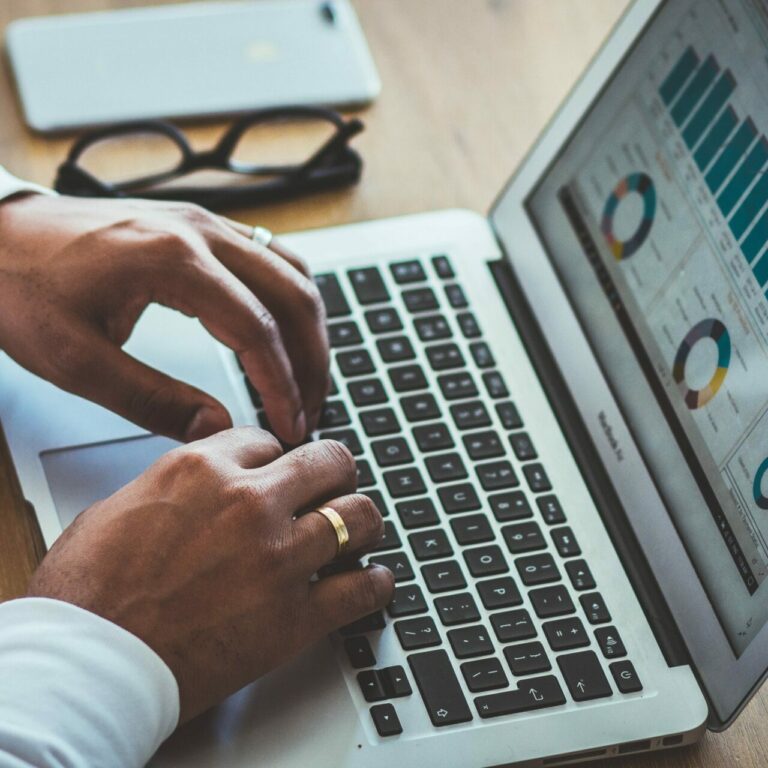Spotlight on…Capturing ‘good enough’ carbon data
In our latest ‘Spotlight on’ article as part of the Climate Action Programme, Amber Rochette, Sustainability Consultant at SustainIt, outlines an approach to help businesses get to grips with their carbon data.
Gathering data is a crucial part of climate action as it allows you to understand how well your organisation is progressing towards its targets. It also enables you to focus on the areas where you can have the most impact. Accurate data means any claims you make about your climate action journey are more reliable, and key stakeholders are more likely to trust your claims. Data is key to bolstering sustainability within businesses and driving real, measurable impact within your organisation. But there is no denying it’s daunting.
Where do you start?
Regardless of size, or industry, every single business already collects some form of data, without realising. For example, utility bills. These are a great place to start. Gas, electricity, water usage and business travel can be translated into estimated greenhouse gas emissions, meaning that you can start painting a picture of the environmental impact your business is having. Once you’ve got to grips with this, you can start thinking more broadly… for example how many of your employees work from home? How often?
As businesses start to grow, naturally there will be more data sets to collect and measure. Data around purchased goods, distribution of goods, and other activities such as employee commuting will increase. Measuring all these data points can help to ensure successful, sustainable business growth. Tracking data (qualitative and quantitative) means that you can easily identify and address any negative economic, environmental, or social impacts that the business is having, and find opportunities to increase value across business operations.
A reminder of some of the key terms…
- Scope 1 = Emissions activities that your organisation is directly responsible for e.g. burning fuels
- Scope 2 = Emissions activities that your organisation is indirectly responsible for e.g. purchasing generated electricity
- Scope 3 = Third party emissions activities that your organisation is accountable for e.g. staff business travel, purchased goods and services
- Emissions factor = a representative value which allows you to convert activity data into greenhouse gas emissions
What does ‘good enough’ data look like?
When using data to drive sustainability, the more robust the data, the better. Every day we deal with 100s of data sets, and to us, the best quality data is accurate, auditable, and actionable.
Let the numbers talk but don’t let perfection stand in the way of action!
Accurate
Keep things consistent. Standardise your data collection and adopt best practices for accuracy during data collection and calculation. Make sure you’re sticking to the same conversion factors when making emissions calculations from raw data sets. Avoid exposure to human error as much as possible, for example, via integration of a sustainability data management software or through robust data collection templates and processes for checking.
As you grow, be mindful that the volume of data you process may also increase; it is recommended that you implement a clearly communicated methodology and have people to check through and identify inaccuracies. In an ideal world, data sets are triple checked, reviewed, and validated. Larger organisations may also consider using a third-party data expert, such as SustainIt, to provide an added level of assurance.
If you only do one thing…be consistent with how you collect and convert your data.
Actionable
What good is collecting data if you aren’t going to do anything with it? We’re firm believers that data is the key to unlocking the most impactful sustainability strategies. Collecting data can help identify key risks and opportunities. And leveraging on the right data sets will help push any business forward in the right direction. For example, rather than collecting ‘volume of waste disposed of’, switch this to ‘volume of waste sent to landfill’. A small change like this can help you track progress and impact over time and set clear, defined business objectives.
Good data will enable you to successfully report against ESG standards and rating agencies. Analysing trends will allow for continuous development and improvement actions to be made; you can tailor specific data insights to increase staff engagement and implement wider behavioural change within the business.
If you only do one thing…link your priority actions with what your data is showing you are the highest emitting areas.
Auditable
As business grows, you may find you want to become certified or regulated by sector specific bodies. Many compliance and regulatory requirements (irrespective of industry) require evidence of improvements, risks, and opportunities. We’re increasingly seeing that regulatory bodies require data to be assured by a third party and given a stamp of approval. Again, this is something we can help with.
If you get into the habit of collecting and managing data in a coherent manner from the off, you can save yourself the pain of going through this again in a few years to come. Try and ensure that you have an audit trail that includes the measurement collected, when it was collected, if it has been modified, how and by whom.
If you only do one thing…write it all down!
If you need any support with managing your non-financial data, or have no idea where to start – get in touch, we would love to chat more about any pain points you might be having with your sustainability data collection.
The Partnership’s Climate Action Programme supports organisations of all sizes and sectors to reduce their carbon emissions and prepare for the impacts of a changing climate through free events, resources, and peer-to-peer learning opportunities. Find out more and get involved.
Share to
